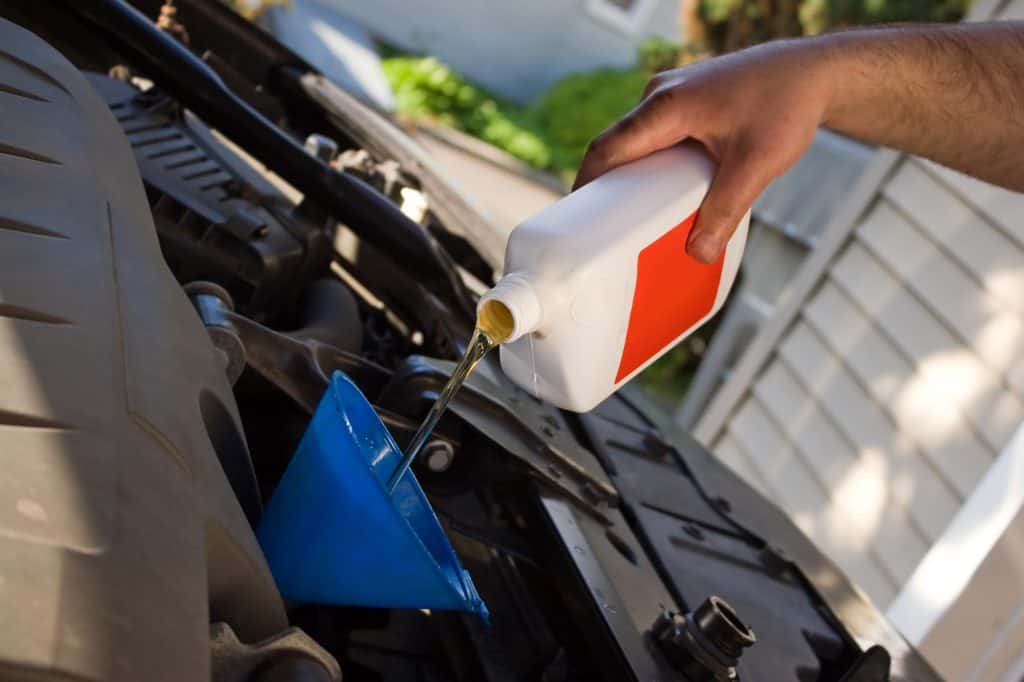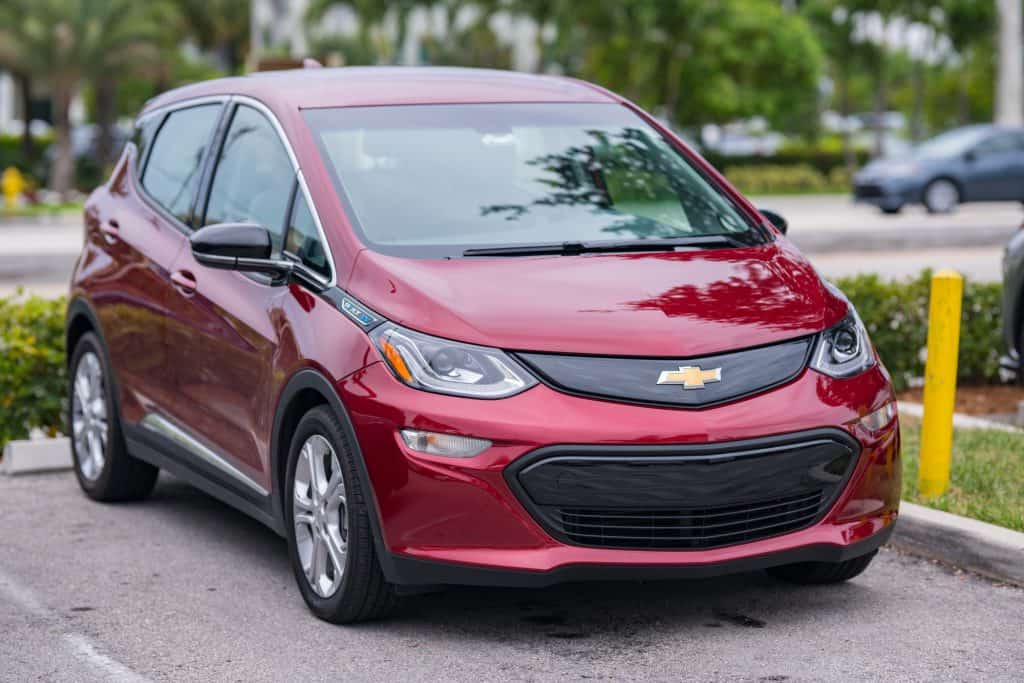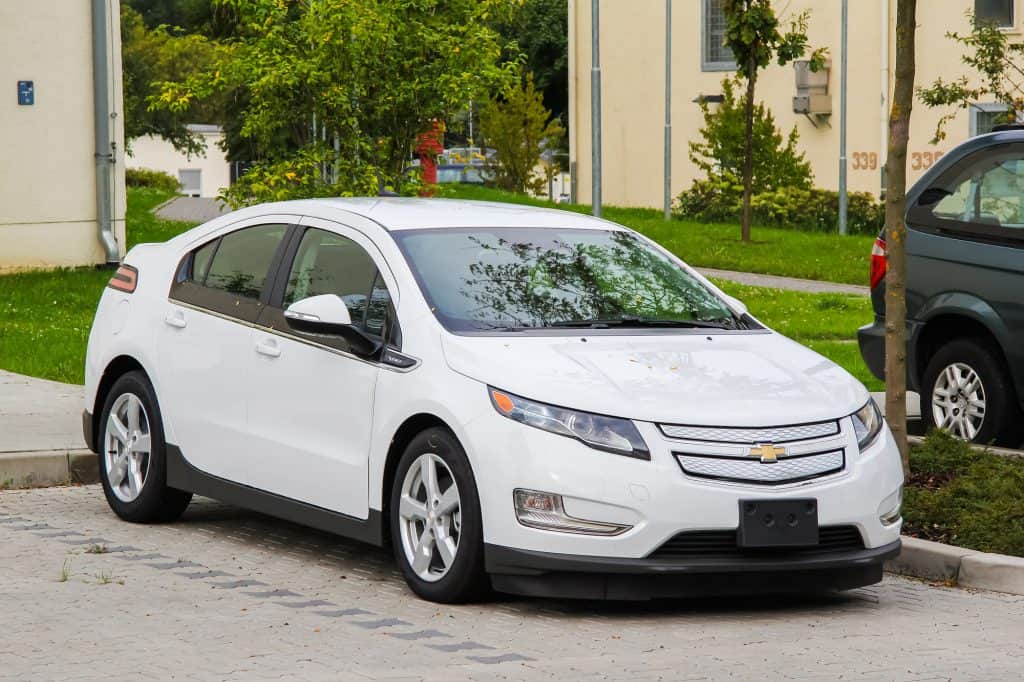The Chevrolet Bolt arrived on the scene back in 2017 offering an all-electric vehicle to fans and followers of the Chevy brand. Before the Bolt arrived, Chevrolet had already found some success with their popular Volt hybrid car.
The Chevy Bolt began life in 2017 and has since been enhanced and developed into its latest incarnation. What’s more, an all-new model, the Bolt EUV crossover has also arrived for the 2022 model year.
One thing that people love about electric cars, including the Bolt, is the relative simplicity that you get when you take the internal combustion engine out of the mechanical equation.
People say that the Chevy Bolt doesn’t even need such basic maintenance as an oil change? Is that really true? In today’s blog we’re looking at Chevrolet Bolt maintenance, and also how it compares to the similarly named (and easily confused) Chevy Volt.
Chevy Bolt: Does it Need Oil Changes?

Let’s start with our titular question. The fact is that the Chevy Bolt does not require oil change,s like that of an internal combustion engine car. The core of the Bolt powertrain is the battery pack and the electric motor. Therefore, the Bolt doesn’t need oil changes because there’s no oil needed to lubricate the moving engine parts that you’d find in a conventional gasoline engine.
So, with even the most basic maintenance such as oil changes not being required, and no combustion engine to deal with, the Chevy Bolt must essentially be a maintenance-free vehicle, right? If only.
While the Bolt won’t need an oil change, it will still require its own fluids, oils and lubricants to keep things running properly. There are far fewer moving parts, it’s true, but there are still moving parts generating heat, which means there needs to be cooling and lubrication. It may not be on the same scale as the Chevrolet Camaro, but it hasn’t been removed completely.
Chevy Bolt: Other Maintenance

So if it doesn’t need an oil change, then what does it need? Since we were talking about oil in the central question, let’s first look at what fluids are required in an EV like the Chevy Bolt. EV manufacturers have to create their own specific products right now because they all use unique designs on their electrical components like motor design.
The lubricants themselves are not as straightforward as those you would use in a conventional gasoline car.
EV lubricants have the following functions:
- Antiwear
- Friction reduction
- Overall efficiency, including electrical efficiency
- Insulation
- Cooling
For example, EV batteries require cooling to prevent them from overheating. They need gear oil in the differentials, as well as for the chassis, gear reducer and on the wheels. EVs also still use brake fluid, and other components like the electric motors have to be greased for heat insulation. If the heat from the motors were allowed to get into the electrical cells of the battery pack, it would cause all kinds of problems for the car.
The real challenge is getting lubricants into the guts of your Chevy Bolt that you know will not negatively impact the sensitive electrical systems. If even one part of the greater electrical system blows, the knock-on effect can be serious and even render the car unroadworthy.
Chevy Bolt Maintenance Schedule

Besides all these lubricants and other fluids, then, what kind of maintenance can you expect on your Chevrolet Bolt? Below are the main features of the maintenance schedule.
Twice a year, a mechanic will need to help you flush any corrosive materials that may have built up on the underside of the EV. Such materials include things like road salt. It doesn’t matter how protected you believe the underside to be. If there’s metal down there, and road salt is in play, then it means that corrosion is almost inevitable.
Every 7,500 miles, there needs to be a tire rotation done on your Chevy Bolt tires. Besides tire rotation, this milestone also requires you to check the following things:
- Coolant levels – battery, cabin heater, power inverter, accessory power, charger modules
- Check for fluid leaks
- Brake inspection
- Steering, suspension and chassis receive visual inspection
- Half shafts and driveshafts checked for excessive wear
- Airbags check
- Door locks lubricated
- Accelerator pedal checked
Every 15,000 miles, the windshield wiper blades need to be replaced; you’ll need a new cabin air filter, too
Every 36,000 miles, replace brake fluid
Every 75,000 miles, new support gas struts for your hood and body
Every 5 years, coolant circuits have to be flushed and refilled
Every 7 years, a/c desiccant changed
What About the Chevrolet Volt?

The similar-sounding names of the Bolt and Volt are a source of some confusion about what the differences are between these to Chevys.
The Bolt is Chevrolet’s all-electric car that was released in 2017. The Volt is a hybrid electric car that was released all the way back in late 2010. As a hybrid vehicle, the Volt has a number of significant differences when compared side by side with a Chevy Bolt:
- Powertrain – the Bolt is all electric, using only a battery pack and electric motors; the Volt is hybrid, using both an internal combustion engine and a smaller battery back with electric motors, with the electric components used in low-speed driving situations, and switching seamlessly to the gasoline engine when wanting to travel more efficiently at high speeds.
- Range – the Bolt can do about 250 miles on a single charge, making it one of the most competitive models for beating people’s range anxiety. At the same time, however, the hybrid car only gets 53 miles on the latest version, and 35 miles on the early-generation models.
- Form – the Volt looks more of a sedan, whereas the Bolt is more like a crossover, or like a small minivan in shape and style.
- Maintenance – the Volt requires all the same maintenance that a conventional gasoline car does, plus additional maintenance on the electrical components, but the hybrid system prevents excessive wear on either powertrain, allowing for easier overall maintenance when you look at it long term. The Volt will need oil changes.
Conclusion: No Oil Changes, but Enough to Maintain
When it comes to the Bolt, the main center of concern for most owners is the battery pack. The rest of the car is pretty straightforward to maintain and will cost a lot less overall in maintenance than just about any gasoline car they have owned in the past. The battery needs care, however, especially in not causing any premature degradation in the battery capacity, which ultimately affects range and performance.
The Bolt warranty on the battery is 8 years or 100,000 miles, so that’s a good amount of protection. It also means that every Bolt on the market right now is still within warranty and it remains to be seen whether or not the Bolt’s battery pack will last beyond that warranty period or fail in the meantime. So far, so good. When you factor in registration, property taxes, insurance and other costs, it’s still not “cheap” to own an electric car, though it can be much cheaper than a gasoline car in nearly every other way.
1 comment
I want to change the “gearbox oil” every 50k. I’ll have to use the Dexron HP fluid (OEM) as Redline does not make a real synthetic (Group 4/5) fluid yet.